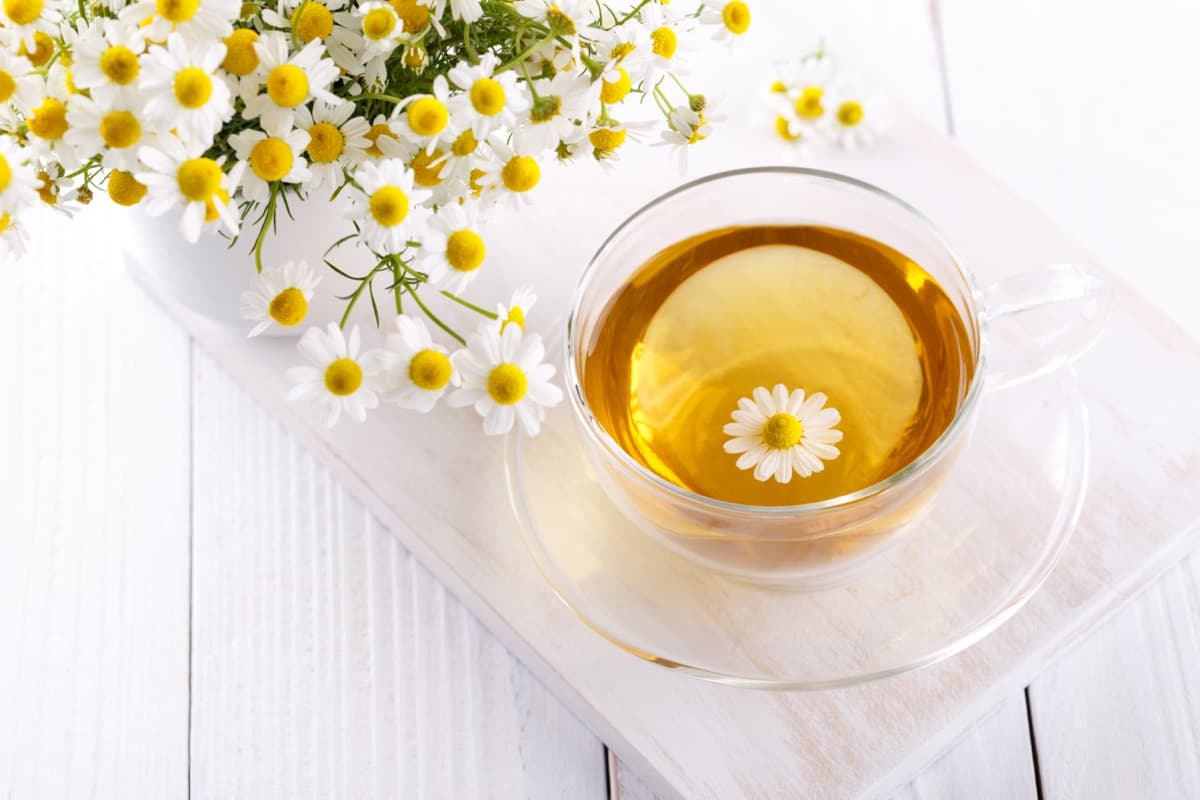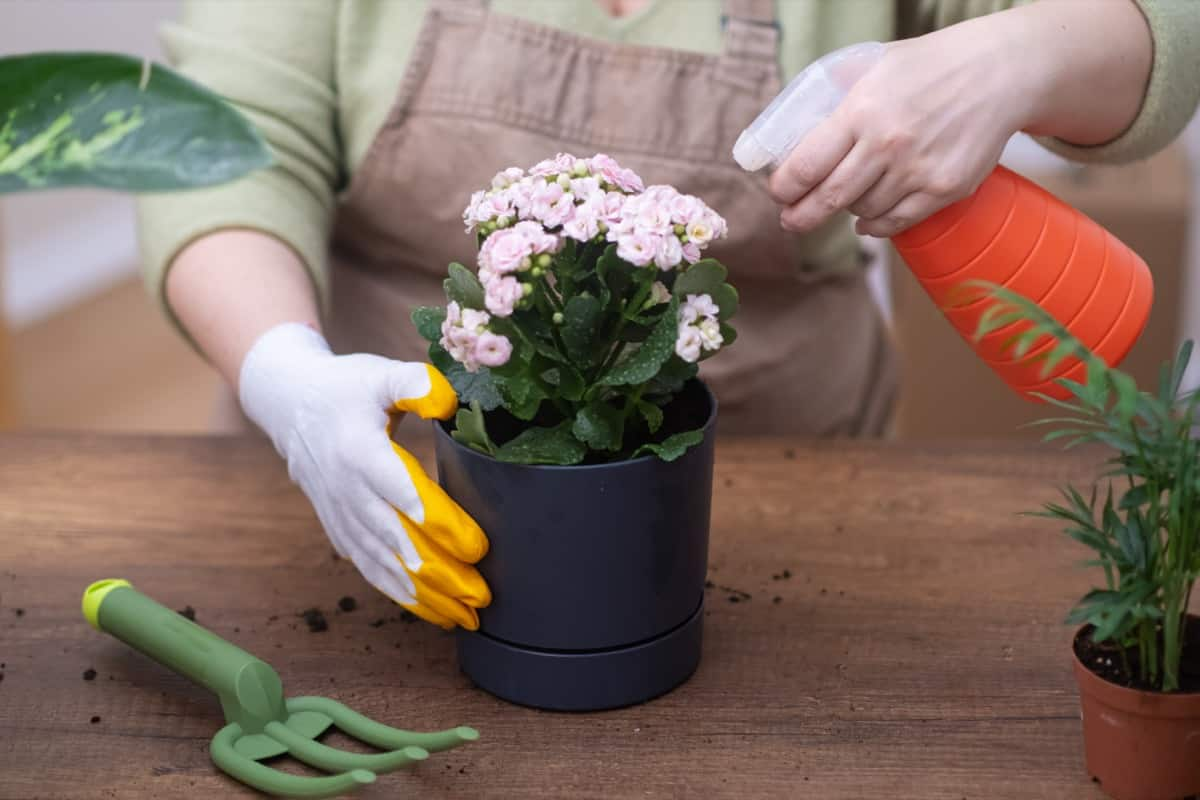Caring for plants entails more than just watering and sunlight. It also means protecting them from various pests and diseases that can wreak havoc on their health and growth. The quest for more organic, natural, and home remedies for plant diseases has led garden enthusiasts and horticulturists to explore chamomile tea’s remarkable properties.

Chamomile tea, renowned for its soothing effects on the human body, surprisingly has much to offer to the botanical world. When used as a spray, it can significantly contribute to plant health, protecting against a host of common plant diseases. This article will detail the method for making your chamomile tea spray at home and will delve into its effectiveness as a medicine for plant diseases.
Homemade Chamomile Tea Spray for Pests and Disease Control
What is Chamomile Tea Spray?
Chamomile tea spray is a homemade, organic solution derived from steeped chamomile flowers. This tea, widely appreciated for its calming effects on humans, also boasts a variety of benefits for plants, particularly when used as a spray. It serves as a preventive measure against common fungal infections, pest infestations, and other plant diseases. Using chamomile tea for plants has been around for quite some time in the organic gardening realm, and it has been proven to be a versatile and non-toxic alternative to chemical pesticides.
What Are the Ingredients Needed to Make Chamomile Tea Spray?
The simplicity of making chamomile tea spray is one of its many attractions. The ingredients required are readily available and uncomplicated. You’ll need chamomile tea bags or loose chamomile flowers, clean water, and a spray bottle. Some gardeners might also include optional additives like a little dish soap to help the solution adhere to plant leaves better.
Recipe/Prepare Chamomile Tea Spray at Home
Creating your chamomile tea spray is straightforward. Start by boiling one quart of water. Once it has reached a rolling boil, add four chamomile tea bags or 4 tablespoons of loose chamomile flowers. Let the blend steep until it reaches room temperature. The tea should ideally be strong, as the goal is to extract as much of the chamomile’s beneficial compounds as possible. Once cool, strain the solution into a spray bottle. If you’ve decided to include the optional dish soap, now is the time to add it – a few drops should suffice.
How Does Chamomile Tea Spray Work?
The secret behind chamomile tea spray’s efficacy is in the chamomile plant’s natural antifungal and antibacterial properties. When you water plants with chamomile tea or spray it onto their leaves, it creates a protective barrier that guards against various pathogens. Additionally, it contains essential nutrients like calcium, potassium, and magnesium, which are beneficial for plant growth and health.
What Pests and Diseases Can Chamomile Tea Spray Control?
Chamomile tea spray can handle a variety of common plant problems. Its potent antifungal properties are particularly effective against fungi-based diseases such as powdery mildew, damping off, and blight. It also discourages the infestation of pests like aphids and spider mites. Using chamomile tea for indoor plants can be especially useful when pest problems are prevalent.
In case you missed it: Homemade Wormwood Spray for Pests and Disease Control: Recipe for Natural and Organic Benefits of Plants

How to Store Chamomile Tea Spray?
Storing chamomile tea spray properly is crucial to maintain its effectiveness. It should be kept in a cool, dark place when not in use, ideally in a refrigerator. The cold temperature helps prolong the potency of the tea. Before each use, shake the spray bottle thoroughly to ensure the ingredients are well-mixed.
How Often Should You Use Chamomile Tea Spray for Your Plants?
Chamomile tea spray can be used as a preventative measure or treatment for existing problems. As a preventative measure, you can use the spray once a week. Suppose you’re treating an existing issue, such as an outbreak of powdery mildew or an aphid infestation. In that case, spraying your plants every few days might be necessary until the issue is under control.
Best Time to Apply and How Much Chamomile Tea Spray Should You Use For Your Garden Plants?
The best time to apply chamomile tea spray is in the early morning or late evening when the sun is not too intense, as it helps prevent leaf burn. As for how much to use, you should aim to spray the plant until you see the liquid dripping off the leaves. This ensures that a sufficient amount of the tea has been applied to the plant. Be sure to spray both the top and undersides of the leaves, as pests often hide beneath them.
How Long Does It Take for Chamomile Tea Spray to Work for Your Plants?
There’s no definite timeline for when you’ll start seeing the effects of chamomile tea spray. It largely depends on the severity of the pest or disease problem. However, with consistent use, you should start seeing improvements within a few weeks.
Benefits of Plants of Using Chamomile Tea Spray in the Home Garden
Using chamomile tea spray in the home garden offers a myriad of benefits. Its natural antifungal and antibacterial properties protect plants from a variety of diseases. Plus, it’s a safe, organic alternative to harsh chemical pesticides. It contributes to a healthier ecosystem in your garden, as it is non-toxic to bees and other beneficial insects. It improves plant health by providing vital nutrients.
Safety Precautions When Using Chamomile Tea Spray
While chamomile tea spray is organic and safe, certain precautions should still be taken. Avoid spraying on a windy day to prevent the spray from getting into your eyes or being blown away. It’s also good to note that while chamomile is generally safe, some people and pets may have allergies, so watch for any adverse reactions. Lastly, although it is a natural solution, it should still be kept out of reach of children.
Application Techniques for Chamomile Tea Spray
The way you apply chamomile tea spray can make a significant difference in its effectiveness. When spraying your plants, ensure you reach all the potential hiding spots for pests and disease. Pay particular attention to the undersides of leaves, where pests often congregate, and the stem, where many diseases take root. Be gentle when spraying to avoid damaging tender plant parts, but ensure a thorough application.
Additionally, consider the plant’s natural moisture levels and environment: some plants thrive in moist conditions, whereas others prefer drier surroundings. By tailoring the application process to suit each type of plant in your garden, you ensure the best chance of successful treatment and a healthy, thriving plant.
In case you missed it: 8 Common Problems with Snake Gourd Plants: Treatment and Solutions

Conclusion
Chamomile tea spray is an excellent natural tool for maintaining plant health. Easy to prepare and apply, it embodies the beauty of natural gardening and offers a solution to those searching for effective home remedies for plant diseases. So, next time your plants need help, remember that the answer might be brewing in your teapot.
- Feed Your Flock for Less: Top 10 Tips to Save on Chicken Feed
- Ultimate Guide to Ossabaw Island Hog: Breeding, Raising, Diet, and Care
- Hatching Answers: The Top 10 Reasons Your Chickens Aren’t Laying Eggs
- Eggs and Economics: Breaking Down the Cost of Raising Backyard Chickens
- Defend Your Greens: Proven Methods to Keep Iguanas Out of Your Garden
- Ultimate Guide to Cinnamon Queen Chicken: A Comprehensive Guide for Beginners
- Ultimate Guide to California Tan Chicken: Breeding, Raising, Diet, Egg-Production and Care
- Ultimate Guide to Marsh Daisy Chicken: Breeding, Raising, Diet, and Care
- 10 Types of Chicken Farming Businesses You Can Start for Profits